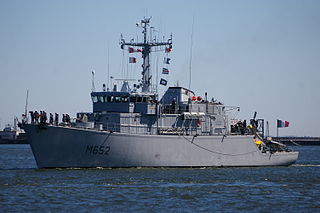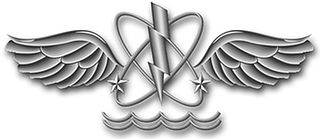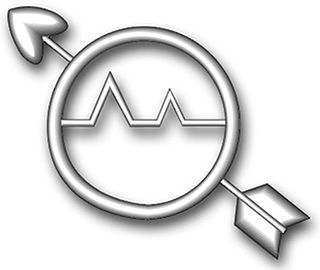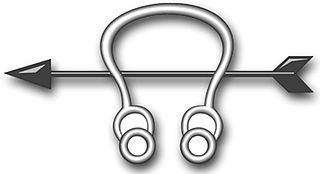| Mineman | |
|---|---|
 Rating insignia | |
| Issued by | United States Navy |
| Type | Enlisted rating |
| Abbreviation | MN |
| Specialty | Weapons |
Mineman (abbreviated as MN) is a United States Navy occupational rating.
| Mineman | |
|---|---|
 Rating insignia | |
| Issued by | United States Navy |
| Type | Enlisted rating |
| Abbreviation | MN |
| Specialty | Weapons |
Mineman (abbreviated as MN) is a United States Navy occupational rating.
ASVAB Score Requirement: VE + AR + MK + MC = 210 or VE + AR + MK + AS = 210
Security Clearance Requirement: Secret
Must have normal color perception and be a U.S. citizen [2]

The Balao class was a design of United States Navy submarine used during World War II, and with 120 boats completed, the largest class of submarines in the United States Navy. An improvement on the earlier Gato class, the boats had slight internal differences. The most significant improvement was the use of thicker, higher yield strength steel in the pressure hull skins and frames, which increased their test depth to 400 feet (120 m). Tang actually achieved a depth of 612 ft (187 m) during a test dive, and exceeded that test depth when taking on water in the forward torpedo room while evading a destroyer.

1 Main Circuit (1MC) is the term for the shipboard public address circuits on United States Navy and United States Coast Guard vessels. This provides a means of transmitting general information and orders to all internal ship spaces and topside areas, and is loud enough that all embarked personnel are (normally) able to hear it. It is used to put out general information to the ship's crew on a regular basis each day. The system consists of an amplifier-oscillator group which is located in the IC/gyro room, a microphone control station, portable microphones at each control station and loudspeakers located throughout the ship. Control stations for the 1MC announcing system are located at the pilot house, OOD stations on the quarterdecks, aft steering and Damage Control Central area.

The Brahmaputra-class frigates are guided-missile frigates of the Indian Navy, designed and built in India. They are an enhancement of the Godavari class, with a displacement of 3850 tons and a length of 126 metres (413 ft). Although of similar hull and dimension, internally, the Brahmaputra and Godavari classes have different configurations, armaments and capabilities. 3 ships of this class serve in the Indian Navy.

A clearance diver was originally a specialist naval diver who used explosives underwater to remove obstructions to make harbours and shipping channels safe to navigate, but the term "clearance diver" was later used to include other naval underwater work. Units of clearance divers were first formed during and after World War II to clear ports and harbours in the Mediterranean and Northern Europe of unexploded ordnance and shipwrecks and booby traps laid by the Germans.

A combat information center (CIC) or action information centre (AIC) is a room in a warship or AWACS aircraft that functions as a tactical center and provides processed information for command and control of the near battlespace or area of operations. Within other military commands, rooms serving similar functions are known as command centers.
The Navy Enlisted Classification (NEC) system supplements the rating designators for enlisted members of the United States Navy. A naval rating and NEC designator are similar to the Military Occupational Specialty (MOS) designators used in the U.S. Army and U.S. Marine Corps and the Air Force Specialty Code (AFSC) used in the U.S. Air Force and the U.S. Space Force.

The Tripartite class is a class of minehunters developed from an agreement between the navies of Belgium, France and the Netherlands. A total of 35 ships were constructed for the three navies. The class was constructed in the 1980s–1990s in all three countries, using a mix of minehunting, electrical and propulsion systems from the three member nations. In France, where they are known as the Éridan class they are primarily used as minehunters, but have been used for minesweeping and ammunition transport in Belgium and the Netherlands, where the Tripartites are known as the Alkmaar class.

Aviation electronics technician (AT) is a US Navy enlisted rating or job specialty. At the paygrade of E-9, ATs merge with the aviation electrician's mate (AE) rating to become avionics technicians (AV). There has been talk of completely merging the two ratings, but as yet no definite plans have been announced. Aviation electronics technicians wear the specialty mark of a winged helium atom.
Aviation structural mechanic is a United States Navy occupational rating.

Aviation Ordnanceman is a United States Navy occupational rating.

Naval Aircrewman (AW) is an enlisted general rating of the U.S. Navy. Sailors in the AW rating serve as aircraft systems operators or inflight system maintenance technicians aboard U. S. Navy fixed and rotoray winged aircraft. They perform duties as varied as aerial gunners, rescue swimmers, radar and sonar operators, airborne mine countermeasures system operators, strategic communications systems specialists, loadmasters, repair technicians, and various other functions depending on the specific aircraft type in which they fly. The rating is divided into five subdivisions termed "service ratings". Those service ratings are: Naval Aircrewman Operator (AWO); Naval Aircrewman Helicopter (AWS); Naval Aircrewman Tactical Helicopter (AWR); Naval Aircrewman Mechanical (AWF); and Naval Aircrewman Avionics (AWV). All five service ratings are identified by a single AW Rating Badge. Many technologically advanced navies have a similar trade.

Fire controlman is a United States Navy occupational rating. Often confused with being fireman on board a ship, FC's actually operate advanced weapons systems, whereas Damage Controlman (DC) are actually the shipboard firefighters.

Operations Specialist is a United States Navy and United States Coast Guard occupational rating. It is a sea duty-intensive rating in the Navy while most of Coast Guard OS's are at ashore Command Centers.

Sonar technician is a United States Navy occupational rating.

The Iowa-class battleships are the most heavily armed warships the United States Navy has ever put to sea, due to the continual development of their onboard weaponry. The first Iowa-class ship was laid down in June 1940; in their World War II configuration, each of the Iowa-class battleships had a main battery of 16-inch (406 mm) guns that could hit targets nearly 20 statute miles (32 km) away with a variety of artillery shells designed for anti-ship or bombardment work. The secondary battery of 5-inch (127 mm) guns could hit targets nearly 9 statute miles (14 km) away with solid projectiles or proximity fuzed shells, and was effective in an anti-aircraft role as well. Each of the four battleships carried a wide array of 20 mm and 40 mm anti-aircraft guns for defense against enemy aircraft.
Radarman was a rating in the U.S. Navy and the U.S. Coast Guard during, and after, World War II. The following ratings existed during the war for male or female enlisted personnel training, or with training, in the operation and maintenance of radar sets:

The Landsortclass mine countermeasures vessel were built by Swedish shipbuilding company, Kockums for the Swedish Navy and the Republic of Singapore Navy (RSN) between 1983 and 1996.

The United States Navy occupational rating of boatswain's mate is a designation given by the Bureau of Naval Personnel (BUPERS) to enlisted members who were rated or "striking" for the rating as a deck seaman. The colloquial form of address for a boatswain's mate is "Boats".

The United States Navy job rating of electronics technician (ET) is a designation given by the Bureau of Naval Personnel (BUPERS) to enlisted members who satisfactorily complete initial Electronics Technician "A" school training.